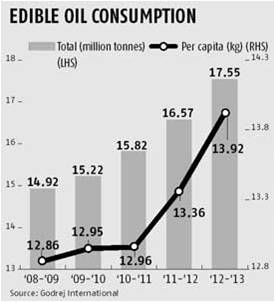Five Policy Changes to Achieve the NAPCC Target

India sources about 5% of its total energy from renewable sources. It has a target of sourcing 15% of its total energy from renewables by 2020 under the National Action Plan for Climate Change.
Despite rapid growth in renewable energy generation by India in past few years, at current capacity addition, the target seems a distant dream. However, few policy decisions by the government can help boost capacity addition and thus achieve the said goal.
5. Adopting CERC framework for Preferential Tariff determination
National Tariff Policy, 2005 states “It will take some time before non-conventional technologies can compete with conventional sources in terms of cost of electricity. Therefore, procurement by distribution companies shall be done at preferential tariffs determined by the Appropriate Commission”. As per this clause, State Electricity Regulatory Commissions determine the preferential tariff for the renewable energy projects to be commissioned in the state.

CERC has developed the framework regulations for annual tariff determination of renewable energy projects as a guide for SERCs. However, most of the SERCs follow their own methodology by adopting only part of this framework. Following CERC framework in entirety will ensure that investors get promised returns as per dynamic market conditions. This will also benefit central government by reducing the load of unnecessary subsidies such as Generation Based Incentive.
4. Continued support to the off-grid solar
MNRE provides 30% capital subsidy for installation of off-grid solar power projects. It has revised the benchmark capital cost by reducing solar module cost.

Installed capacity of off-grid solar power projects as on 30th June 2013 was 132 MW. As more and more developers apply for the limited subsidy, there is uncertainty that the subsidy will be received after application. To provide confidence to investors, government needs to provide long term visibility on the subsidy and benchmark capital cost. Subsidy can be reduced gradually till substantial installed capacity is achieved.
3. Open access charges and regulations
To increase the consumption through open access, renewable energy needs to be cost competitive with the consumer tariffs and conventional sources of energy. Per unit levelized cost of renewable energy (except solar) is already lower than industrial tariff in most of the states. However, when open access charges are added to this cost, sourcing renewable energy becomes unfeasible.

To promote capacity addition, renewable energy needs to be made competitive with other sources of energy. This can be achieved by providing concessional open access charges for renewable energy projects. Also, banking facility needs to be provided to the infirm sources such as wind and solar which hold the largest potential.
2. Depoliticize the electricity sector
Power Ministry released the integrated rating of Discoms on March 2013. As per this report, Cost coverage ratio for most Discoms has remained low (<0.90) due to substantial increase in expenses primarily on account of higher fuel cost, employee related expenses and interest cost whereas increase in tariffs have not been adequate enough to compensate for the higher costs. Cumulative losses of Discoms exceeded Rs.1.9 Lakh Crores by March 2013.

While Cost of Supply has increased rapidly, tariffs have not been increased at the same rate due to political sensitivity of the subject.
Govt. has managed to successfully distance itself from petrol, diesel and LPG prices. Same action needs to be repeated for ensuring the viability of Discoms so that they are in a position to purchase power from costlier renewable energy sources.
1. Enforcing Renewable Purchase Obligation
RPO is an Indirect tax levied on the consumers for promoting renewable energy installations in the country. Discoms are expected to recover the cost of this tax through consumer tariffs. The following table shows the RPO fulfillment by various states in India for FY 2012-13.

As it can be seen from the graph, Discoms in only few states have successfully fulfilled RPO targets for FY 2012-13. While it may seem to be a uphill task, ERCs need to show courage to enforce RPO even in the worsening financial situation of the Discoms. This will help the country’s power sector in long term.
Author’s Bio:
 Ashish Tikhe is a project manager at Agneya Carbon Ventures Private Limited. He has extensive experience and expertise in the domain of Renewable Energy regulations and policies and Wind energy technology. Prior to joining Agneya, he has worked with Health Point Services where he was responsible for IT and operations.
Ashish Tikhe is a project manager at Agneya Carbon Ventures Private Limited. He has extensive experience and expertise in the domain of Renewable Energy regulations and policies and Wind energy technology. Prior to joining Agneya, he has worked with Health Point Services where he was responsible for IT and operations.
Ashish holds an MBA degree from IIFM Bhopal and is a Mechanical Engineer from Pune University. He can be reached at – ashishtikhe8(AT)gmail(DOT)com
Do you have a flair for writing? Interested in environmental issues? Why don’t you submit an article for the GreenCleanGuide 2013 contest? For contest rules, please visit this link




Nice article Ashish!
Thanks Pranali
Nice essay Ashish….!!!!!!
very good and keep it up.
Thanks Vivian and Pawan
nice essay and very informative…………..!!!!!!!!!!
Nice Article Ashish !!!
Good work Ashish,.!!
Wonderful article..